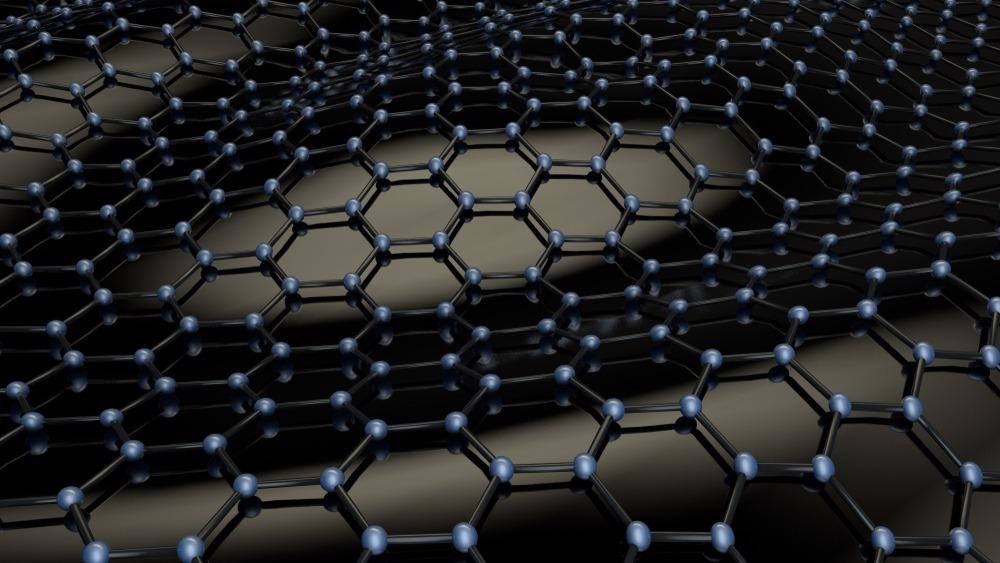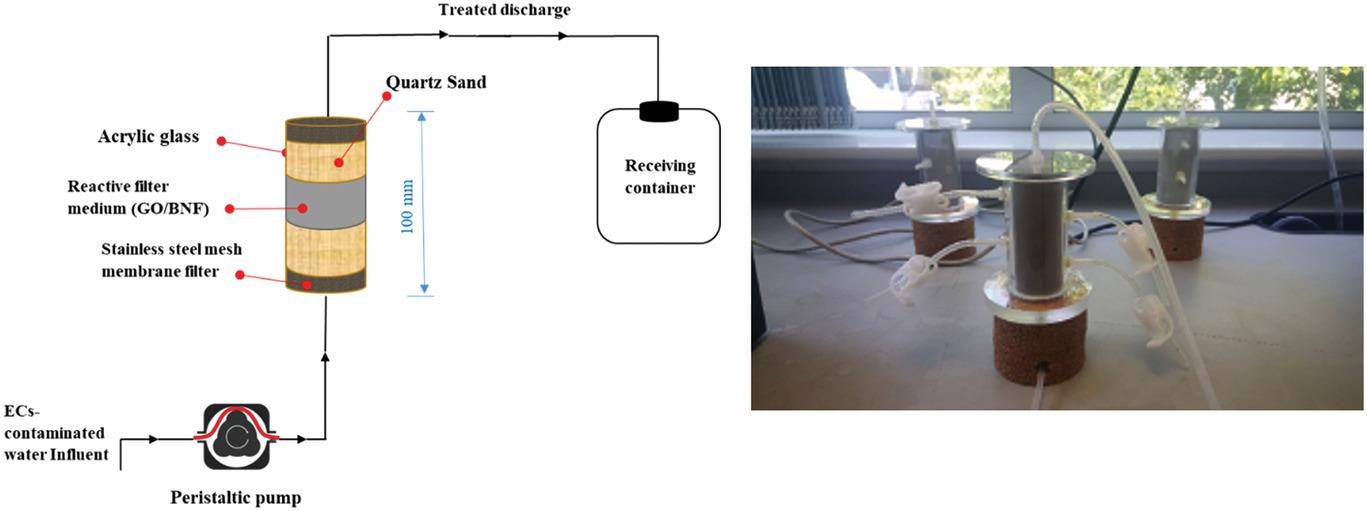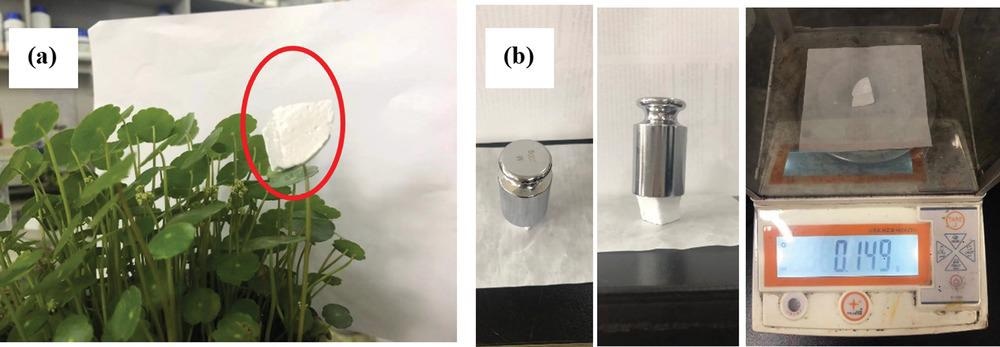Although graphene-based substances are a potential adsorbent material, their performance in eliminating pharmaceutical pollutants has been restricted due to deterioration induced by aggregation and a lack of control over their porosities and dimensions. A paper published in the journal Advanced Sustainable Systems reported the formation of unique graphene material supported with high porosity composite foam to combat aggregation.

Novel Graphene-Based Foam Composite As a Highly Reactive Filter Medium for the Efficient Removal of Gemfibrozil from (Waste)Water. Image Credit: 3DStach/Shutterstock.com
Increasing Contribution of Pharmaceuticals Towards ECs
Pharmaceuticals are among the most prominent emerging contaminants (ECs) in water systems. They may cause severe environmental consequences along with potential health problems.
To successfully eradicate ECs from processed wastewater streams, effluent and drinking water purification facilities must adopt adequate tertiary treatment methods.
Adsorption – The Method of Choice for Water Treatment
Adsorption is regarded as a technology with great potential in water treatment. It is a dependable, less expensive approach compared to reverse osmosis, oxidizing, microfiltration, ultrafiltration, and ion exchange, among others.
The most obvious benefits of employing adsorption for treating wastewater are simplicity of the procedure, an abundant supply of various kinds of adsorbent materials, cost-effectiveness, and the capacity to remove most types of contaminants such as biological, inorganic/organic, or insoluble/soluble.
Unfortunately, the adsorptive approach for water treatment does have certain practical constraints, most notably a shortage of large capacity adsorbent materials for a large variety of ECs. Graphene-based substances outperformed numerous other potential adsorbent materials explored, demonstrating encouraging effectiveness in this regard.
Pros and Cons of Graphene-based Materials
Graphene and graphene oxide (GO) have a large adsorbing propensity for natural contaminants due to their large innate specific area (relative to numerous different carbonaceous substances), wettability, monolayered architecture, and a surface adorned with oxygen-containing functional groups (OCFGs).
Despite the optimum adsorptive performance and consistent reusability of porous graphene (PG) towards a variety of emerging contaminants, issues in isolating these graphene-based materials (GBMs) out of water, along with their restricted reusability, limits their realistic implementations in large-scale water treatment.
Another significant impediment to their use is agglomeration among their sheets. Restacking allows this agglomeration to restore the graphene-based material to its basic source material (graphite).

Schematic diagram for column filter setup (left) and a photo of 40 mm ID adsorption column filter (right). © Khalil, A. M., Han, L. et al. (2022).
Preparing Foams for Supporting Graphene
Functionalizing through surface modification is thought to be a useful method of preparing foams to treat the effluent. Various strategies have lately been utilized to improve the adsorptive effectiveness of diatomite foams. Unfortunately, the procedures were rather complicated and produced a significant amount of greenhouse emissions.
Boron nitride (BN) has a number of exceptional qualities, including superior thermal and chemical stability and excellent wear resistance; as a result, it is employed in high-temperature environments and in other industries.

Demonstration of physical properties of the foam (lightness and strength): a) as-prepared foam placed on plant leaves, and b) the foam material withstanding a standard cylindrical weight of around 1340 times its own weight. © Khalil, A. M., Han, L. et al. (2022).
Important Findings of the Study
In this study, reduced porous GO nanofilms were effectively anchored on ribbon-shaped BN foam for treating gemfibrozil (GEM)-polluted water in batch testing and column investigations.
The graphene-based foam outperformed its graphene-based competitors like GO, PG, and nanographene platelets (NGP) in terms of adsorptive kinetics towards gemfibrozil, with 90 percent extraction efficiency in only five minutes.
Concerning longevity, the graphene-based nanomaterials supported with BN foam showed consistent gemfibrozil drug extraction effectiveness when recycled for numerous rounds without significant sorption losses. Furthermore, the foam material demonstrated outstanding features, including lightness with a porosity of more than 98 percent as well as excellent strength, with the ability to withstand 1300–1400 times its own weight.
In filtering activities, the foam-filled adsorptive column filter surpassed the sand filter-based sonicated porous graphene nanosheets that handled gemfibrozil aqueous mixtures. To mimic the test findings of the elimination of emerging contaminants inside the GO/BNF filter material, a computational 1-D solute transportation framework was developed.
Conclusions
The adequate construction and verification of the fixed-bed system rely heavily on choosing an appropriate porous medium, which may either be the filled column material or the responsive zone material, as well as on the precise experimental measurement of the advection-dispersion-retardation characteristics.
The reinforced composite foam based on graphene for filtering purposes would be a significant step forward the water and effluent filtering technologies. These results imply that high porosity foam-reinforced graphene nanomaterial filters with shorter interaction durations and prolonged breakthrough periods for treating water and effluent might be easily manufactured.
Reference
Khalil, A. M., Han, L. et al. (2022). Novel Graphene-Based Foam Composite As a Highly Reactive Filter Medium for the Efficient Removal of Gemfibrozil from (Waste)Water. Advanced Sustainable Systems. Available at: https://doi.org/10.1002/adsu.202200016
Disclaimer: The views expressed here are those of the author expressed in their private capacity and do not necessarily represent the views of AZoM.com Limited T/A AZoNetwork the owner and operator of this website. This disclaimer forms part of the Terms and conditions of use of this website.